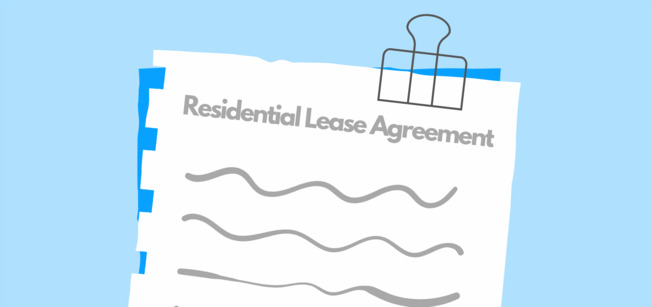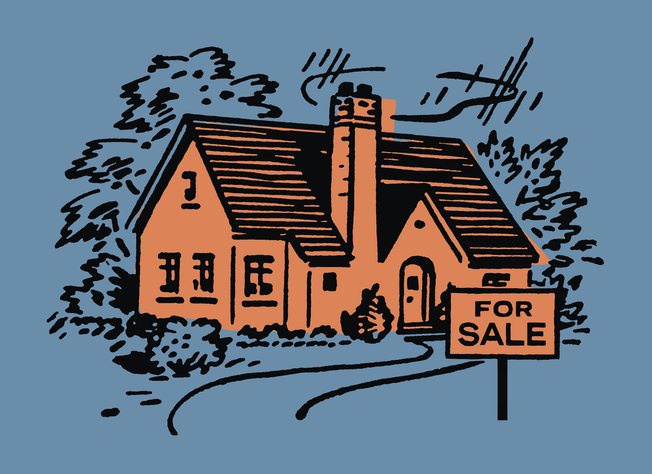
How To Pick the Right Apartment Unit Level for You
May 30, 2024
When you’re embarking on your new apartment hunting mission, there’s a never-ending list of factors to consider before you decide on your new home. Will you have access to laundry and a dishwasher? Are pets allowed? Is there enough natural light?
Among the most important factors when you’re considering multi-level apartment buildings is which floor you choose. Despite the views, the top floor might not necessarily be the best floor for every renter, and despite the convenience, a lower floor may not be a perfect match. With that in mind, it’s best to zoom out and weigh the ups and downs of each floor.
Should I rent a top-floor apartment?
Top-floor apartments are associated with luxury in real estate, which may lead you to believe that you’d be happiest in that last unit. And based on your priorities and lifestyle, you could be right — or, maybe you’ll end up opting for a lower-level apartment instead.
What are the pros of a top-floor apartment?
- Views. Top-floor apartments often do come with better views, especially in high-rise buildings, which can in turn make your environment more refreshing when you step inside after a long day at work.
- Less noisy. When you turn in for the night, you’ll never have to worry about upstairs neighbors moving furniture at 10 p.m. or playing fetch with Fido indoors.
- Heat efficient. Your top floor apartment will likely remain a bit warmer in the winter, so you don’t have to dread the heating bill quite as much.
- Privacy. At the top floor, you won’t have to worry about anyone seeing into your windows — so you may feel some more security.
What are the cons of a top-floor apartment?
- Price. Although your top floor may be quiet and serene, your monthly rent might also be more expensive due to the view that comes with living on a higher floor.
- More stairs. A top-floor apartment will be more difficult to get to if the building doesn’t have an elevator. With a load of groceries in tow, for example, that view from your sixth floor walk-up might not seem as worth it when you finally open the door.
- More expensive to cool. Take note that hot air rises, so in the summer, it might take more air conditioning, and thus more electricity, to keep living spaces on upper floors cool.
Top questions to consider: Can I afford it? Can I access my apartment easily enough? Am I a potentially noisy neighbor?
Should I rent an apartment on a middle floor?
Mid-level apartments are more of a happy medium for people who don’t want to test the waters of the extremes of apartment living on the top or bottom floors, but they come with their own unique set of challenges and benefits.
What are the pros of a mid-level apartment?
- Efficient with utilities. Mid-level apartments are naturally insulated by their neighboring apartments above and below them. Because of this, you’ll likely save money year-round on utility costs because you’ll avoid the inundation of cold in the winter and the rising of heat in the summer. The higher you go, of course, the hotter it’ll be, and vice versa.
- Less expensive than top-floor apartments. Because they don’t have the same prestige or view as top-floor apartments, they are often in a lower price range for rent.
What are the cons of a mid-level apartment?
- Noise. As a mid-level apartment dweller, you’ll have neighbors both above and below you. You’ll have to worry about not making too much noise and your neighbors not making too much noise. Unless the building has vacant units or very quiet tenants, the noise level will likely be a hot topic of conversation in your living room.
- Lack of view. If you’re in a densely populated area with lots of buildings, it’s likely that you’ll have no view past the apartment in the building next to you.
Top questions to consider: Am I a potentially noisy neighbor or particularly sensitive to noise? Is a nice view among my priorities? Am I looking to save money on utilities based on my comfortability with the rent?
Should I rent a ground-floor apartment?
If you’ve ever lived in a ground-floor apartment, you know it has its fair share of ups and downs. It may not be the most glamorous potential apartment, but it can be the top choice for convenience and thriftiness.
What are the pros of a ground-floor apartment?
- Accessibility. Rental properties that are on the first floor will have the least amount of stairs, so if getting up and down stairwells is a concern, they may be a good fit for you. You’ll also have easy access to outdoor areas, and you’ll save energy and time whenever you need to enter your apartment with heavy items or loads of groceries in hand
- Less fear about being noisy. If you have any combination of pets or kids, a ground floor apartment bodes well for you because you likely won’t come across any disgruntled downstairs neighbors during your lease (if your own noise is a concern for you, it’s important to check if a tenant rents the apartment basement).
- Price. With a ground-floor apartment, you’ll save money on air conditioning in the summer at your lower level and on rent due to ground level apartments being among the cheaper options.
What are the cons of a ground-floor apartment?
- Noise. Ground floor apartments are some of the noisiest, as you’ll likely be within earshot of not only entering and exiting neighbors but also the street. If your city has lots of honking and passersby, there’s a good chance you’ll feel a part of the action even when you’re in the comfort of your home.
- Lack of privacy. Since your apartment is at street-level, you may notice that passersby can look directly into your windows. That lack of privacy may be a concern for some, especially if there are windows in the bedroom.
- Potential for pests. Not only do you have more ease of access into your apartment, but so do other living things — you might come across more creepy crawlies and other pests in your ground level apartment.
Top questions to consider: Am I a potentially noisy neighbor? Do I often have heavy items or large grocery hauls in tow? Am I deathly afraid of bugs and other pests?
Should I rent a garden-level or basement apartment?
Garden-level and basement apartments get a bad reputation because they’re usually below ground level, giving tenants a street view if they’re lucky. But they also have their own redeeming qualities — especially for those looking to save money during their apartment search.
What are the pros of a garden-level or basement apartment?
- Price. The biggest advantage of living in a garden-level apartment is that the rent will likely be a bit lower than the other units due to the perceived drawbacks of the unit.
- Easy to cool. You’ll save money on air conditioning in the summer in a lower-level unit because your apartment will trap cold air.
- Access to outdoor spaces. Many garden- or basement-level units come with their own outdoor spaces — but even if yours doesn’t, you’ll still easy access to the outdoors (a pet-friendly option!). If you have a car parked in a parking lot behind your building, you’ll also be able to get to it quickly and easily.
What are the cons of a garden-level or basement apartment?
- Less natural light. In terms of climate, you might feel a bit of dampness and darkness in a below-ground apartment, meaning you’ll likely have some due diligence in terms of lighting and dehumidifying the space. If you work a night shift, however, you’ll have better sleep during the day because your apartment will remain darker.
- No view. Your view will probably be lackluster, depending on where you live, and there’s a good chance your windows will be barred.
Top questions to consider: Am I looking to save money? Do I need easy access to outdoor spaces? Am I in search of a dark place to sleep during the day?
The Bottom Line
Perhaps you’d do anything (including climb five flights of stairs) to get that uninterrupted view of your city; in that case, have at it. Or maybe you know your pup loves a pre-dinner fetch session in the hallway to wind down for the night — so you take it upon yourself to live in a ground-floor space, even one with lawn access for your pooch. There’s no one best option for everyone; choosing the best apartment unit level for you is all about looking holistically.
Top cities
Atlanta Apartments
1,862 apartments starting at $630/month
Austin Apartments
5,958 apartments starting at $600/month
Baltimore Apartments
1,479 apartments starting at $640/month
Boston Apartments
5,616 apartments starting at $425/month
Charlotte Apartments
3,065 apartments starting at $570/month
Chicago Apartments
5,466 apartments starting at $400/month
Dallas Apartments
5,502 apartments starting at $625/month
Fort Worth Apartments
2,696 apartments starting at $695/month
Houston Apartments
5,832 apartments starting at $450/month
Las Vegas Apartments
1,017 apartments starting at $795/month
Los Angeles Apartments
12,826 apartments starting at $750/month
Miami Apartments
710 apartments starting at $1,200/month
Milwaukee Apartments
1,104 apartments starting at $475/month
New York Apartments
8,971 apartments starting at $600/month
Oakland Apartments
942 apartments starting at $850/month
Orlando Apartments
859 apartments starting at $895/month
Philadelphia Apartments
3,602 apartments starting at $500/month
Phoenix Apartments
3,548 apartments starting at $592/month
Pittsburgh Apartments
1,388 apartments starting at $590/month
Portland Apartments
2,267 apartments starting at $575/month
Raleigh Apartments
1,480 apartments starting at $550/month
San Antonio Apartments
3,392 apartments starting at $525/month
San Diego Apartments
2,844 apartments starting at $650/month
San Francisco Apartments
666 apartments starting at $500/month
San Jose Apartments
503 apartments starting at $1,000/month
Seattle Apartments
3,528 apartments starting at $452/month
Tampa Apartments
776 apartments starting at $850/month
Washington DC Apartments
2,295 apartments starting at $910/month


